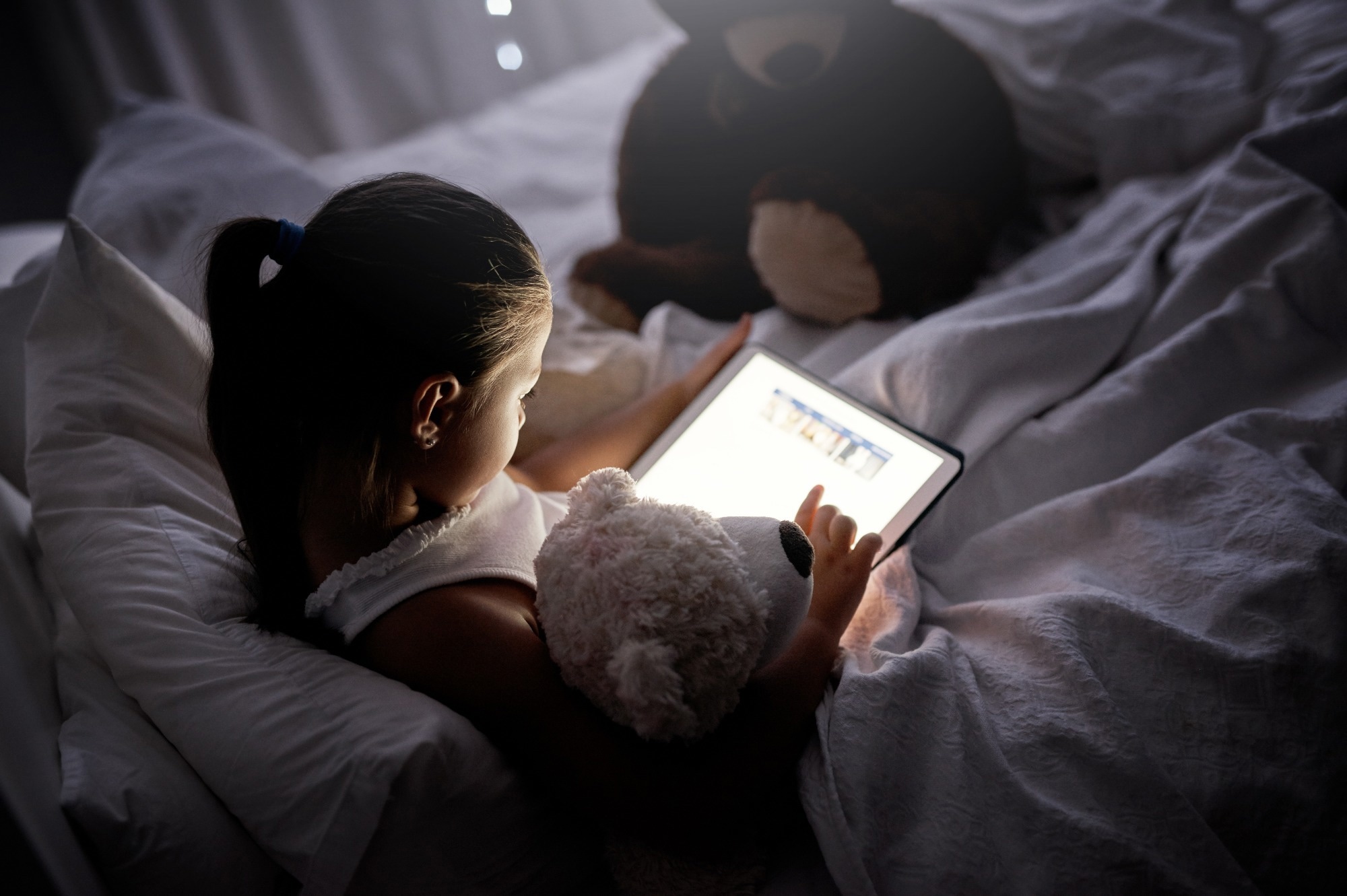In a recent study published in the Journal of Adolescent Health, researchers investigate the potential link between bedtime screen use in early adolescents and sleep outcomes after one year. Overall, bedtime screen use was associated with shorter sleep durations and increased sleep disturbances one year later in early adolescence.
Study: Bedtime Screen Use Behaviors and Sleep Outcomes in Early Adolescents: A Prospective Cohort Study. Image Credit: PeopleImages.com – Yuri A / Shuterstock.com
How does screentime affect sleep?
Research shows that screen use, which includes television, computers, and mobile phones, increases during early adolescence between the ages of 10 and 15 years and has been associated with academic, mental health, and sleep issues.
Adequate sleep is vital for adolescents’ behavioral, emotional, and cognitive development. In fact, early sleep problems can be used to predict behavioral and emotional concerns, as well as weight gain later in life.
Most studies on screen use and sleep are cross-sectional in design and focus on daily rather than bedtime use. Studies from Switzerland, the United Kingdom, and Norway reported that bedtime screen use negatively impacts sleep; however, these studies were associated with several limitations. Likewise, the United States Adolescent Brain and Cognitive Development (ABCD) Study recently reported that bedtime screen use was associated with sleep disturbances; however, the cross-sectional nature of this study prevented the researchers from establishing causality.
About the study
The present study included 9,398 participants between 11 and 12 years of age with complete data from the ABCD study. About 48% of the study participants were female, 45% were non-White, and the average age was 12.
Screen usage around bedtime was assessed using a nine-item survey that included various screen activities, device presence, and phone usage at bedtime. The activities included gaming, social media use, texting, video calling, internet browsing, and watching movies, videos, or television. Overall screen usage data were collected through the Youth Screen Time Survey, which calculated average daily screen time.
In years two and three of the ABCD study, caregivers assessed sleep disturbance using a 26-item measure, which calculated an overall sleep-wake disturbance score and subscale score for disorders of initiating and maintaining sleep. Sleep duration was assessed using the Munich Chronotype questionnaire, which calculated the weighted average sleep duration.
Confounding data on sex, race/ethnicity, age, household income, parent education, study site, melatonin use, adverse childhood experiences, and depression symptoms were also collected. Statistical analysis involved using logistic, ordinal logistic, multiple linear regression models, and propensity weights.
Study findings
About 63% of participants had a television or electronic device in their bedroom, whereas 54.9% turned off their phones before going to sleep. In one week, 16.2% were woken by phone calls or messages, whereas 19.3% used a device if they woke up at night. Bedtime screen behaviors increased from years two to three.
Having a television or electronic device in the bedroom was associated with shorter weekly sleep duration. While leaving the phone’s ringer on was associated with increased sleep disturbances and shorter sleep durations, putting the ringer on silent or vibrate was associated with shorter sleep durations.
Using electronic devices before bed was associated with shorter weekly sleep durations and greater sleep disturbances. Specific activities like talking on the phone, texting, playing music, and using social media were associated with increased sleep disturbances and more severe insomnia.
Total daily recreational screentime was also related to sleep disturbances and shorter sleep durations, although to a lesser extent. Being woken by phone calls or texts and using devices during the night were both associated with reduced sleep durations and increased sleep disturbances. Although bedtime screen use did not affect changes in sleep duration over time, total screen time and playing music before bed were associated with higher sleep disturbance scores.
Important strengths of the current study include the large and diverse study cohort, strong external validity, and a prospective design focusing on early adolescents. However, the study findings are subject to potential recall, social desirability, and selection biases. Furthermore, the current study did not include details on screen use context, changes in screen use patterns, and sleep disturbance classifications.
Conclusions
The study findings emphasize the urgent need for clinicians to address bedtime screen use among adolescents. Moreover, the researchers suggest that parents should implement strategies like a ‘Family Media Use Plan’ to limit screen time before bed.
These observations provide important insights into the potential benefits of reducing bedtime screen use for improving sleep. Future studies should explore the mechanisms that contribute to this association, use objective measures, and assess how bedtime screen use impacts sleep as adolescents age.
Journal reference:
- Nagata, J. M., Cheng, C. M., Shim, J., et al. (2024). Bedtime Screen Use Behaviors and Sleep Outcomes in Early Adolescents: A Prospective Cohort Study. Journal of Adolescent Health. doi:10.1016/j.jadohealth.2024.06.006








